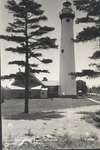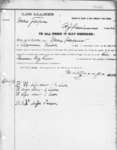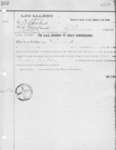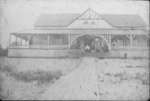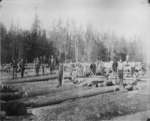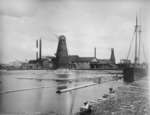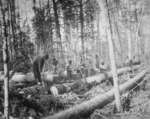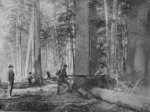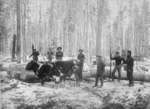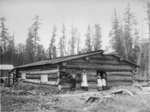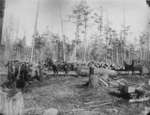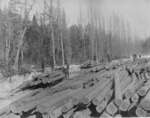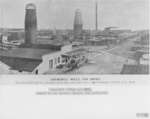Results
- A Little History about the 40 Mile Point Lighthouse Building the lighthouse took from July of 1896, as soon as the building materials arrived to November 12, 1896. Housing for the crew was built firsA Little History about the 40 Mile Point Lighthouse Building the lighthouse …
- Log mark or marks for Greely and Stephens in Alpena, Michigan, 1896.Log mark or marks for Greely and Stephens in Alpena, Michigan, 1896.
- Log mark or marks for Max Jasspor in Alpena, Michigan, 1896.Log mark or marks for Max Jasspor in Alpena, Michigan, 1896.
- Brush Creek Lumber Camp Account Ledger, 1896-1897Brush Creek Lumber Camp Account Ledger, 1896-1897
- Log mark or marks for H. D. Cleveland in Alpena, Michigan, 1896. Assigned to Greif Bros. company of Clevlend, Ohio. April 1, 1901Log mark or marks for H. D. Cleveland in Alpena, Michigan, 1896. …
- Above taken from "The Town That Wouldn't Die" by Robert HaltinerAbove taken from "The Town That Wouldn't Die" by Robert Haltiner
- Above taken from "The Town That Wouldn't Die" by Robert Haltiner.Above taken from "The Town That Wouldn't Die" by Robert Haltiner.
- Lockwood School was built in the 1890s with three rooms being added in 1895. The upper story burned in 1918 and was not replaced. It was located on the southeast corner of of Fourth and Lewis StreetsLockwood School was built in the 1890s with three rooms being added …
- Ox-Bow banking grounds. The "ox-bow" was named for a twisting stretch of the Thunder Bay River that resembled a yoke used to harness oxen. The banking grounds (on the banks of the river) were where lOx-Bow banking grounds. The "ox-bow" was named for a twisting stretch of …
- Information taken from "Lumbering in Michigan" by Maria Quinlan.Information taken from "Lumbering in Michigan" by Maria Quinlan.
- Loggers peeling bark from trees. This was usually done with cedar and hemlock trees. Tannin was extracted from hemlock bark to be used in the leather tanning process.Loggers peeling bark from trees. This was usually done with cedar and …
- Stacks of lumber along the Thunder Bay River waiting to be loaded on to ships. Prentiss Lumber Mill is at the center. Note the masts of schooners in the river.Stacks of lumber along the Thunder Bay River waiting to be loaded …
- Information taken from "Lumbering in Michigan" by Maria Quinlan.Information taken from "Lumbering in Michigan" by Maria Quinlan.
- Information taken from "Lumbering in Michigan" by Maria Quinlan.Information taken from "Lumbering in Michigan" by Maria Quinlan.
- A team of oxen being used in a logging operation. Oxen were more commonly used is Southern Michigan and were eventually replaces with horses. Oxen were often preferred to horses, because they could bA team of oxen being used in a logging operation. Oxen were …
- A cook shack at the sire of a logging operation. There was usually a head cook, assistants, and a "chore boy." Three meals a day were served with lunch being taken to the men in the woods.A cook shack at the sire of a logging operation. There was …
- The banking grounds (on the banks of the river) were where logs were hauled prior to being put in the river to be sent to the sawmill.The banking grounds (on the banks of the river) were where logs …
- "Churchill Mills and Dock. The Churchill Mill is a modern up to date saw mill, only a short distance from D. & C. dock." "Churchill Office and Mill, Burner of Old Masters Shingle Mill, left, 1896""Churchill Mills and Dock. The Churchill Mill is a modern up to …






